Dear father and mother, I knowI like courtesy. Manners, at their core, are culturally-filtered actions that confirm the empathic nature of human interaction. OK, I'll try to put that another way. When I hold a door open for someone, and they walk through, it's nice if they say thank you. Superficially, it would be considered plain good manners. But at a deeper level, the person is acknowledging that I did something that took thought and effort, that I delayed my own journey by a little bit to make theirs a little easier. They get that I didn't have to hold the door.
I cannot your kindness repay,
But I hope as the older I grow
I may learn your commands and obey.
You loved me before I could tell
Who it was that so tenderly smiled,
And now that I know it so well,
I should be a dutiful child.
--from a sampler by Fanny Kitson Newman, London 1832, age 6. Yes, 6.
Yes, it bugs me when I do this and somebody walks through the door without a glance or word, as if it were my job. And by the way, that's not enough. As if all of us haven't had our shares of thankless jobs or ungrateful bosses/ employers/ clients/ customers, getting paid does not take the place of simple, empathic, courtesy. We should thank people for a job well done.
How do we teach this kind of behavior to children?
This is a much more complicated question than parenting books would have you believe. The complication results from the understanding that each child brings to these interactions their own social programming and intuition, governed by a wide variety of influences from brain chemistry to sibling birth order. As with my perspective on parenting in general, there is no one right answer.
That being said, there are clear wrong answers. The parent who punishes the child for what is perceived as bad manners does not effectively teach the child to be polite. They may indeed condition the behavior they desire. We can indeed physically intimidate most children to get them to perform whatever tricks we have in mind for them to do. It changes a behavior without teaching any knowledge or understanding that can be applied to different situations when the threat isn't there.
For those of us who didn't go to Dartmouth in the early 1960s, an instructive documentary film provides a glimpse of a typical hazing ritual that culminates in the repetition of the phrase, "thank you sir, may I have another?" I advise all parents of college-bound children to obtain a copy and study it, in private.
Children, I believe, are a lot smarter than we often give them credit for being. They usually know--or eventually find out--when we're lying to them. It is particularly insidious to make them lie for us. That's a great way to teach them what dishonesty is and how casually we employ it.
So it continues to bother me when it unfolds in my office. One of the very least favorite things I have to do in my job is perform a painful procedure. Whether it's giving a shot or taking out a splinter, draining an infection or just finding out where it hurts, I don't look forward to it. Kids, of course, are not usually trying to repress their feelings, and are often refreshingly open about how they feel about the unpleasant activity. No good parent wants to see their child in pain and no good doctor wants to cause it. So why is it that many parents make their child say thank you as they are leaving the office?
It's fine to remind your child to say thank you after getting a lollipop. Maybe they need a little coaching to ask for one with a please. But being grateful for a shot is too much like thank you sir, may I have another.
It's true that courtesy becomes a habit and rote repetition will reinforce the habit you'd like your child to acquire. But it's the empathic foundation of manners that will actually make them into courteous people. We need to teach that. Here are some of the ways to do it.
-
Notice them being good. It never ceases to surprise me how often children will occupy themselves quietly while a parent and I engage in important but incomprehensible conversation, and the parent doesn't notice! I really try to thank the child for helping by letting us talk about things. I tell them how great it is that they put away the blocks, or looked at the book. If there is one universal failure of parents, this is it. Like the parents of Fanny Newman, we simply expect excellent behavior. How is that different from our ungrateful boss, who simply expects our superior work product as the norm and neither notices nor rewards it? Why do parents expect their kids to do stuff without thanks? So much of what I do with behavior is managing rational expectations. You made the decision to have children and if you expected them to thank you for the privilege, your goals need to be adjusted. Seriously. If you want them to be speaking to you when you're old, you need to start right now. I have nothing against assigning them duties around the house—but if these chores get done, you still need to say thank you. Every single time. Even if it's a uniformed doorman who opens the door for you, thanking him says so much—especially if you're with your child. We need to re-train ourselves to see what's right in front of us, the child who's doing something right. And don't wait around for the kid to be doing everything right. I promise they are doing lots of things right, so don't let a day go by without thanking them for something real.
-
Point out to them when somebody is helping them (or you). Though shopping and getting around in general can be quite an inconvenient hassle with a child, every parent's life is filled with the kindness of strangers who give up their seat on the bus, hold one of the grocery bags, or otherwise lend a hand when it's obviously needed. You might thank the person, but did you explain it to your child? Did you say it really helped us when that lady gave us her cart. That's why I said 'thank you'?
-
Tell them how it makes you feel. Every child wants to please their parent, and they want to learn how other people do it, too. So when it's you that gets thanked for bringing over a pie, don't miss the opportunity. Tell your child that it made you feel good when you were thanked for it. You might be shocked how often your child will notice things to thank you for once you explain how this works.
-
Don't force them to give thanks for stuff that hurts. It's not courtesy, it's counterproductive Dickensian brutality that will just teach them that these basic expressions and words are meaningless. So in #1 above, when you thank them for something, it's got to be something they know is honest. Thanking them for being 12 or for doing something you made them do (like getting shots) is not going to leave a helpful impression on an intelligent child of nearly any age.
By the way, I found the full(?) text of the poem. I haven't been able to find an author, so if anybody knows who wrote it, please share.
My father, my mother, I know,
I cannot your kindness repay;
But I hope that, as older I grow,
I shall learn your commands to obey.
You loved me before I could tell
Who it was that so tenderly smiled;
But now that I know it so well,
I should be a dutiful child.
I am sorry that ever I should
Be naughty and give you a pain;
I hope I shall learn to be good,
And so never grieve you again.
But, for fear that I should dare
From all your commands to depart,
Whenever I'm saying my prayer
I'll ask for a dutiful heart.
I suppose this says a lot about the way that children were looked upon 200 years ago. There's a lot about it that makes me uncomfortable.


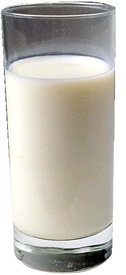 Remember the wax paper containers that we had in elementary school? It was never clear which side you should open, though it did seem that one side opened easier than the other. Often enough, for inexplicable reasons, both sides got open and the container, now missing apparently key elements of its structural architecture, would become floppy. Drinking from it became difficult. I’m not, just so it’s clear, nostalgic for those little containers.
Remember the wax paper containers that we had in elementary school? It was never clear which side you should open, though it did seem that one side opened easier than the other. Often enough, for inexplicable reasons, both sides got open and the container, now missing apparently key elements of its structural architecture, would become floppy. Drinking from it became difficult. I’m not, just so it’s clear, nostalgic for those little containers. That’s not enough. In the last quarter of the 19th century, New Yorker Jacob Riis wrote about baby ‘farms’ in which some poor adults would, for money, take in babies from families who couldn’t afford to care for them. The milk they were given wasn’t good, and these caretakers would give them opium to keep them quiet until they died. This freed up space to take in more babies. None of this particularly attracted attention, both because of the poverty of the families involved and the brutal routine nature of this kind of illness. This was chronicled in How the Other Half Lives, which Riis published in 1890. In 1891 the infant mortality rate in New York City was 240 per 1000 births. That’s about 1 in 4. After a lot of controversy and debate, and after a major typhus epidemic blamed on raw milk, New York started enforcing rules about pasteurization. Within a few years, the mortality rate for infants had dropped to 71 per 1000, 1 in 14.
That’s not enough. In the last quarter of the 19th century, New Yorker Jacob Riis wrote about baby ‘farms’ in which some poor adults would, for money, take in babies from families who couldn’t afford to care for them. The milk they were given wasn’t good, and these caretakers would give them opium to keep them quiet until they died. This freed up space to take in more babies. None of this particularly attracted attention, both because of the poverty of the families involved and the brutal routine nature of this kind of illness. This was chronicled in How the Other Half Lives, which Riis published in 1890. In 1891 the infant mortality rate in New York City was 240 per 1000 births. That’s about 1 in 4. After a lot of controversy and debate, and after a major typhus epidemic blamed on raw milk, New York started enforcing rules about pasteurization. Within a few years, the mortality rate for infants had dropped to 71 per 1000, 1 in 14.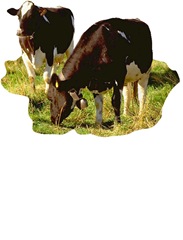 During a 20-year period,
During a 20-year period, 
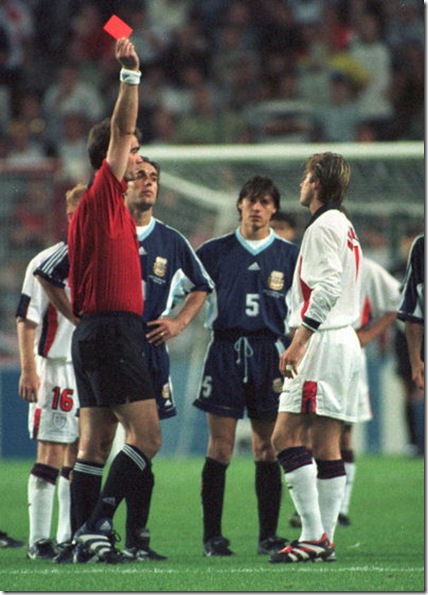
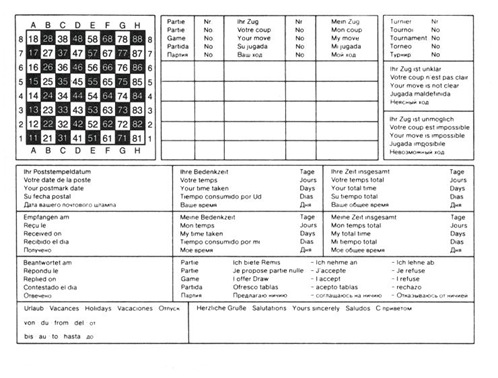 The
The 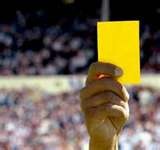
 When he gives it to you, he gets another 5 minutes. You have to honor this! Here’s a subtle point in my invention: he gives you the 5-minute extra card. That means he doesn’t get another and another and another. It becomes way more difficult to whine and negotiate when you have given away all the currency of time which these cards represent. You can show some concrete thinking, too.
When he gives it to you, he gets another 5 minutes. You have to honor this! Here’s a subtle point in my invention: he gives you the 5-minute extra card. That means he doesn’t get another and another and another. It becomes way more difficult to whine and negotiate when you have given away all the currency of time which these cards represent. You can show some concrete thinking, too.




